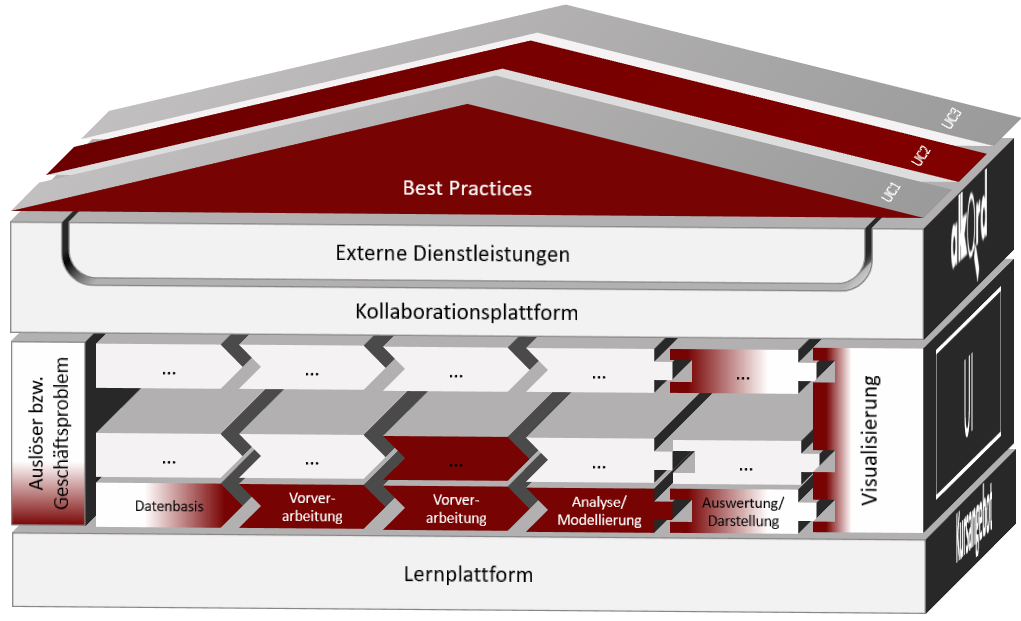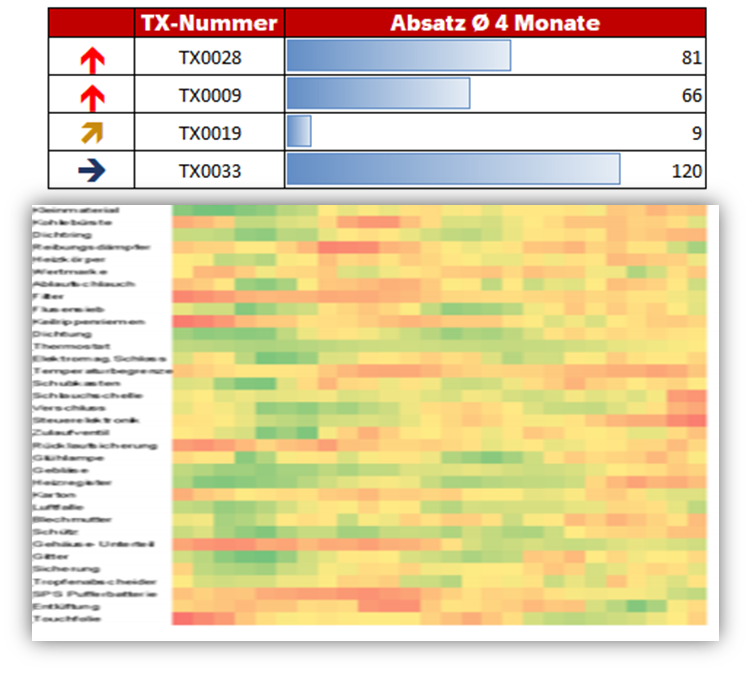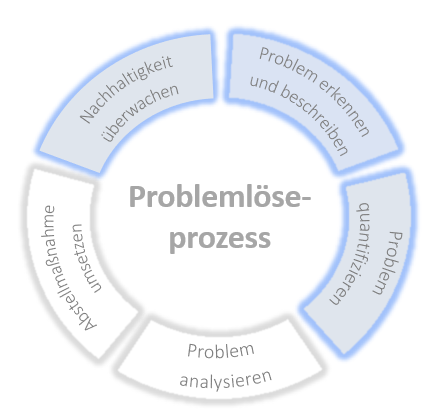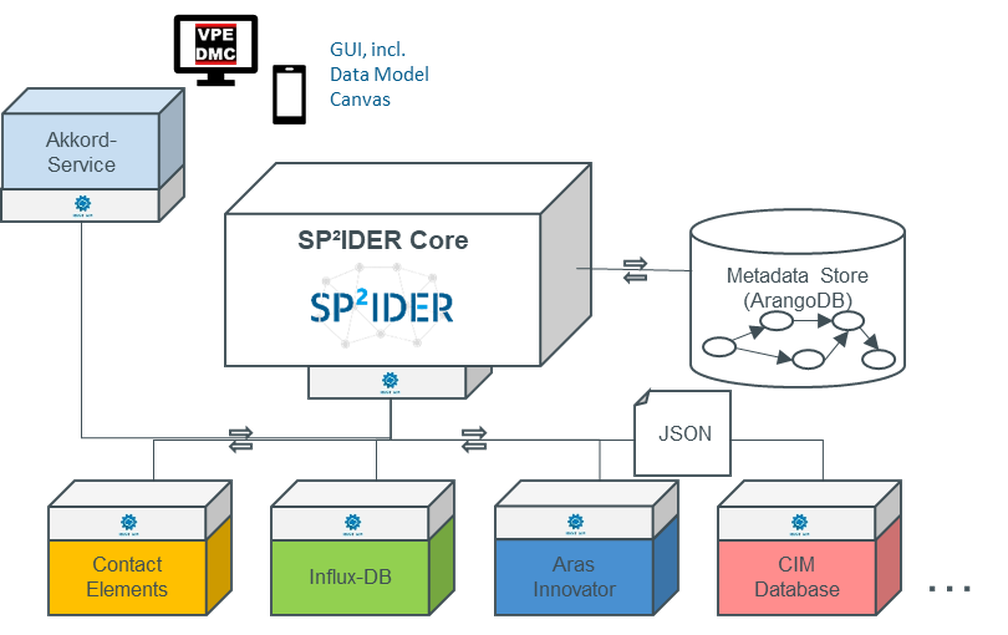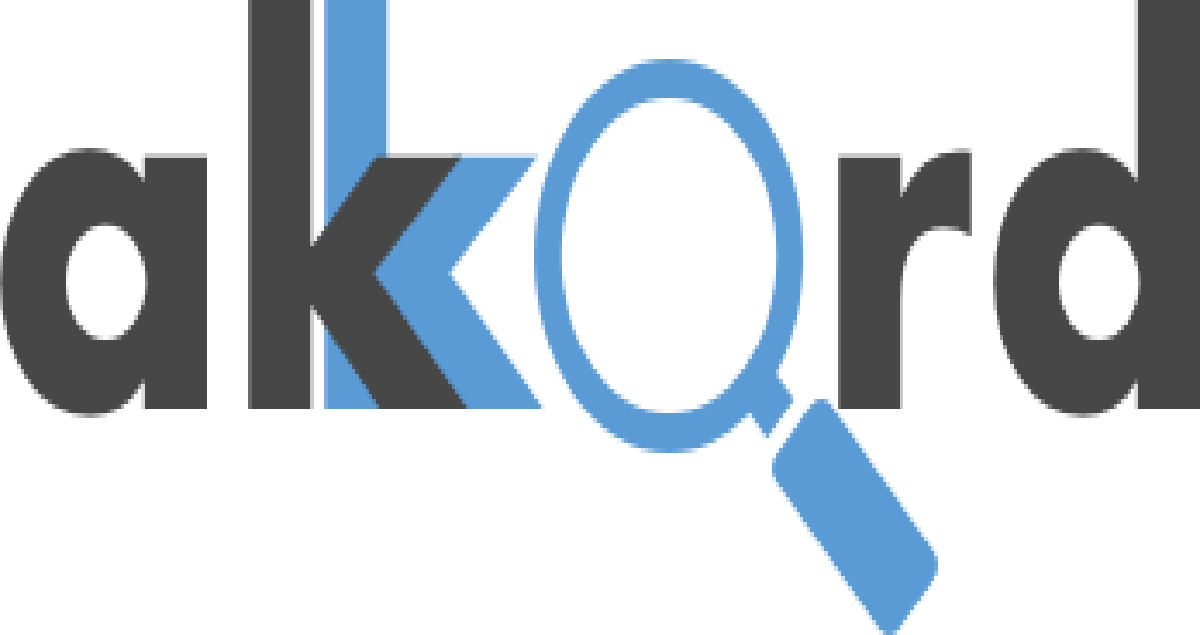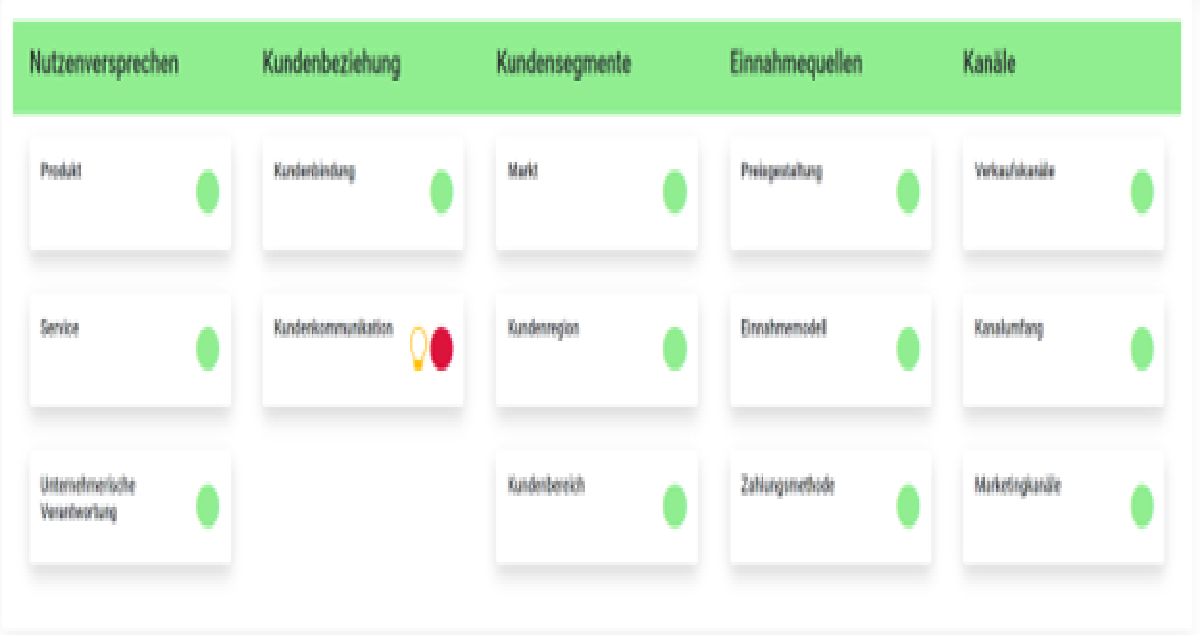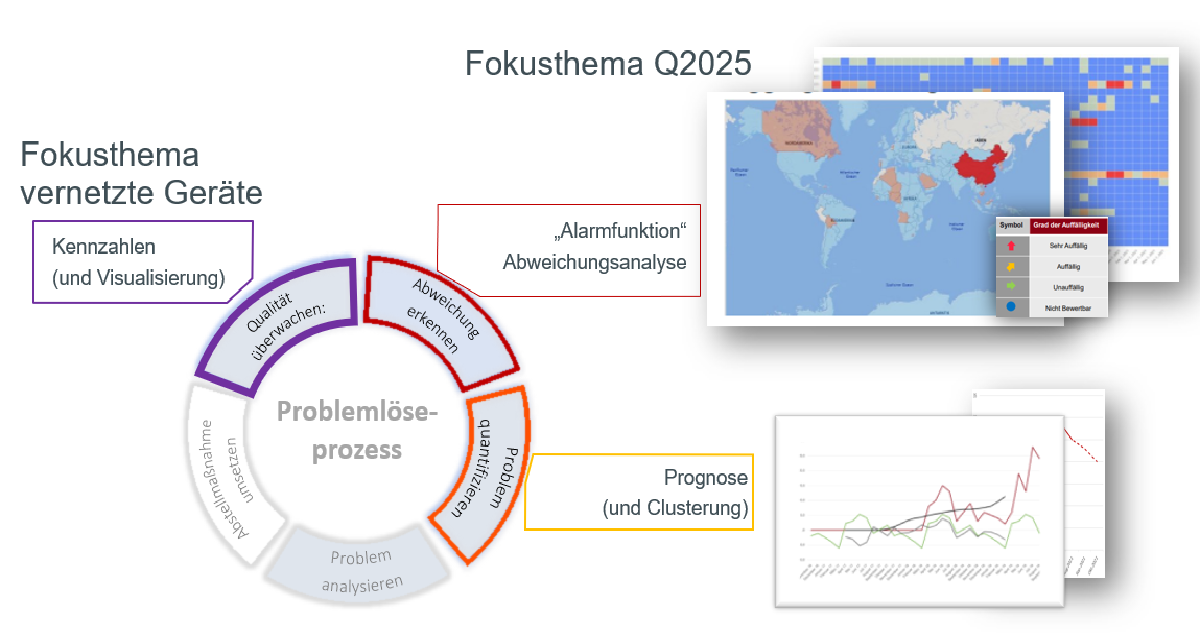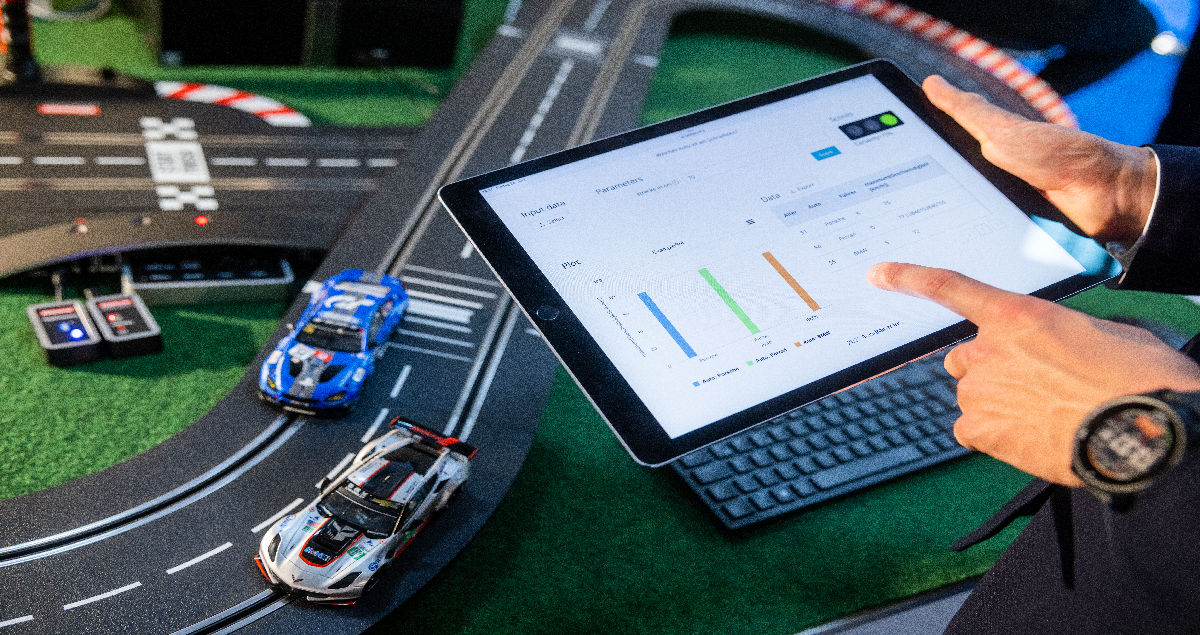Work report from Use Case 2: “Data-driven networked quality management”
Current situation
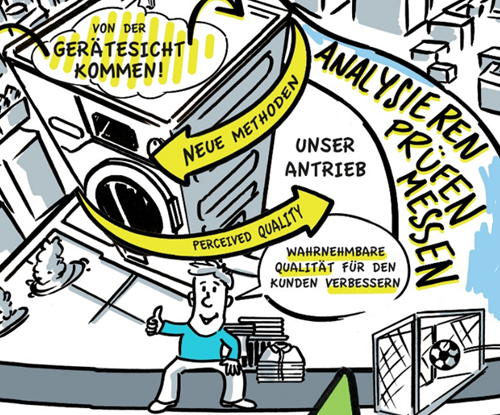
Figure 1: Vision of Miele Quality Management in the Business unit Laundry (detail)
Created with the support of Visual Facilitators GmbH, Susanne Ferrari, 2020
In which direction should the area of quality management develop or evolve in order to raise the perceived quality for the customer to a new level? An important part of the answer for Miele: by using and networking data intelligently, utilizing and expanding the expert knowledge of employees and thus making knowledge about perceived quality quickly available where it can best be influenced – namely everywhere in the company.
The potentials and expectations associated with increasing availability of big quantities of data and good data science approaches are confronted with some challenges, for example: heterogeneous data structures, gaps in data competence among employees who have important expertise, and lack of knowledge about time, effort and complexity of data analytics projects in the organization.
Objective and procedure
Use case 2 “data-driven networked quality management” has set itself the goal of laying the foundations for a gradually expandable, efficient and holistic reporting and analysis system that creates transparency about the quality situation and focuses on potential for quality improvement and optimization of products and processes in a differentiated, user-specific manner.
The core aspects of the use case correspond to different modules of the AKKORD building blocks (see Figure 2): The generalized pre-processing and analysis modules for efficient data analysis and networking – explicitly including pragmatic and low-threshold applicable data science approaches – are in the operational center. For a methodological approach, these building blocks are complemented by questions on data handling and basics of data characterization. In order to be able to design the use of analyses and visualizations in a user-friendly way, a good methodology in the subject area of business understanding also plays an important role, with a special focus on the users (customer acceptance). Participation in the research project enables a broad build-up of experience within the project team and beyond, and is supported by aspects of change management. In the medium term, this and other knowledge is also to be conveyed through the learning platform and thus made accessible to a broader group of people.
Miele as use case owner works closely with other members of the consortium. These partners are mainly mosaiic, which provides coaching regarding methods and change, and RapidMiner supporting in the development of generalized preprocessing and analysis modules. The Institute of Production Systems (IPS) develops its own generalized questions in the context of the use case, which shall be transferred to the entire use case.
The specific questions of the use case are derived from data and information from field observation, which has been used at Miele for years to monitor quality in the field and provide concrete feedback from the usage phase of Miele appliances. Group-wide specific topic areas for reporting and analysis were already identified in advance and relate to, for example, data from customer service visits, data from networked devices, and data from endurance testing.
The approach in the use case should enable solutions that are as close to the application as possible. For this reason, all aspects are worked out on the basis of very concrete questions and application examples in order to be transferred from a basic idea via the proof of concept to a generalized approach for the entire use case. The generalization should also always be further developed and validated on the basis of concrete data sources and questions.
Results so far
As a basis for the procedure for all questions in the use case, general procedures for business understanding / user reference and data understanding were established and tested.
Business understanding and user focus: The most important user groups of the results of field data analysis were interviewed and described in the form of 7 personae (Figure 3). The personae help to classify and prioritize particular applications, and also to involve the corresponding user groups in finding solutions.
Data Understanding: Data and their interrelationships have been and will be characterized in information models or in a business glossary, and the corresponding data structures are made available for comparison as an application example for the “Data Backend” building blocks in AKKORD.
Modeling / Analysis modules: As a first application example, an alarm system as an indicator for possible technical quality deviations worldwide was developed from data of spare parts sales of individual materials or groups of materials. The modeling was done in RapidMiner in a process tailored to the use case and its requirements. There, data mining is used to forecast curve progression, thus providing the basis for measuring possible deviations by evaluating the differences of the actual numbers from the forecast. In this way, both an alarm system and a forecasting system are available. The evaluation of the concept and results was carried out on the basis of user surveys and case studies from historical data with a very positive result for this proof of concept.
Next Steps
The detection and forecasting of deviations is of great value among other things in the quality assurance of series-produced appliances: The problem-solving process can be roughly divided into five steps, which can also be found in Miele’s quality processes (see Figure 5). In three of these steps, namely the recognition and description of the problem, in the quantification and also in the monitoring of the sustainability of the solution, analyses on alarm and prognosis play an important role.
Therefore, with the support of RapidMiner and the IPS, the existing preprocessing and analysis modules are now being further developed, supplemented, adapted, and generalized in such a way that, on the one hand, they become applicable to additional data sources in the use case itself and, at the same time, are made available as generalized analysis and preprocessing modules in the AKKORD platform.
In a further question on a new data source, the data from networked devices, an additional new key performance indicator is to be developed together with the IPS and RapidMiner.
Last but not least, the use case is also structured and staffed in such a way that the questions and the group of participants in the company are very well suited for the evaluation of the AKKORD reference building blocks and its modules.
Author and Contact Person:

